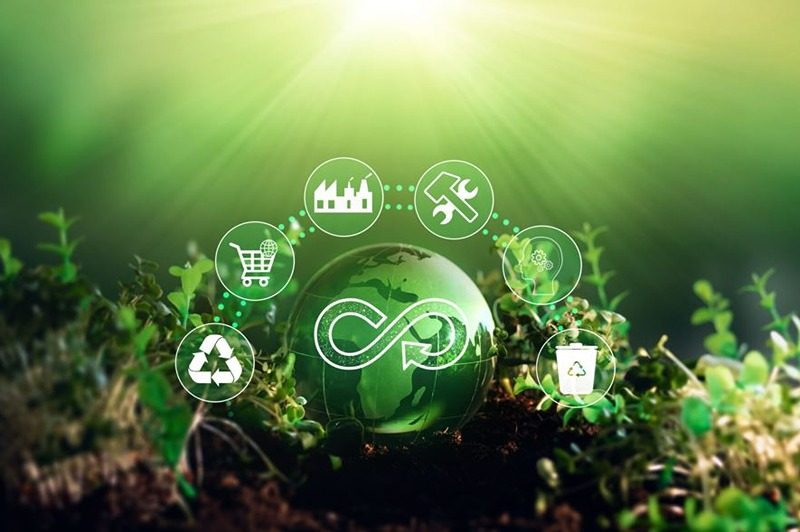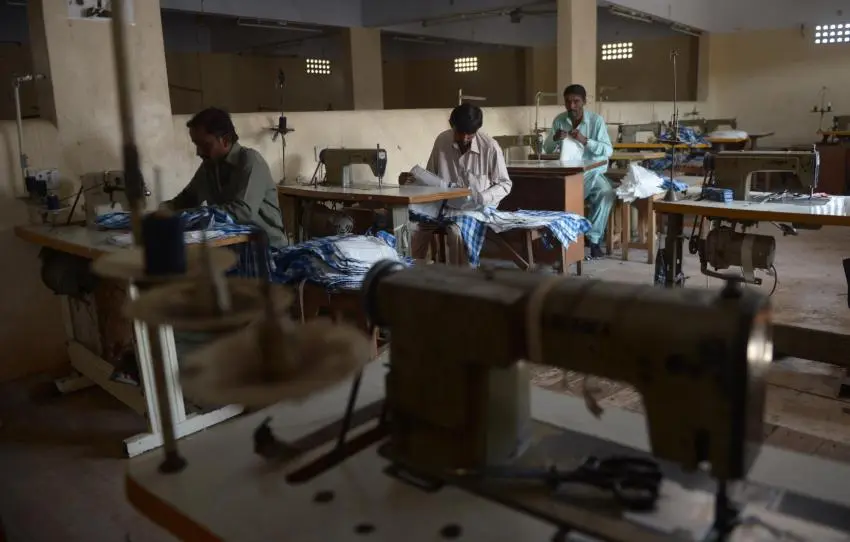The textile industry is the second most polluting industry in the world after oil, on which it is heavily dependent. According to "A new textiles economy: Redesigning fashion's future", a report by the Ellen MacArthur Foundation, the textile industry generates 1.2 billion tonnes of CO2 equivalent worldwide. A figure that far exceeds the emissions from international air and sea transport.
What is environmental impact?
Environmental impact refers to all the effects likely to modify the way the environment functions. Although it can be positive or negative, depending on the product, process or project, the term is generally used to qualify and quantify the seriousness of the damage caused to the environment. It is estimated by measuring several flow and potential impact indicators: depletion of the ozone layer, particles and respiratory effects of inorganic substances, aquatic ecotoxicity, eutrophication of water, water consumption, human toxicity, etc.
The carbon footprint is currently the most widely used indicator for assessing the environmental impact of a product, process, project or activity. The greenhouse effect is a record-breaker in terms of negative changes to the functioning of the environment and the planet. It is one of the causes of climate change, global warming, rising sea levels, melting ice and many other phenomena.
Why does the textile industry pollute?
There are several reasons why the textile industry pollutes. The 2017 report by the Ellen Mc Arthur Foundation states that this is mainly due to:
- the extraction and use of large quantities of non-renewable resources,
- landfill and incineration of waste without recycling,
- and repeated washing of clothes.
Consumer behaviour is making a major contribution to the intensification of these polluting and environmentally damaging practices. The textile industry is particularly linear. It can be summed up in three words: production, consumption and disposal. This vicious circle generates an enormous amount of waste. Around three quarters (75 %) of the new materials and raw materials used in the production of clothing and linen end up in landfill or are incinerated. Only 25 % of this is recycled at the end of its life. To get an idea of just how serious the situation is, consider that the average person buys 9.2 kg of clothes a year, but only 3.2 kg are collected.
How is the environmental impact of an object determined?
The environmental impact of an object can be positive or negative, but never zero. This impact must be assessed throughout the product's life cycle, from raw material sourcing to manufacturing, use and recycling. To do this, it is essential to draw up a list of the components used at each stage of the product's life and to measure their individual emissions. Analysis of the flows and exchanges between the stages will provide an overall estimate.
In the textile industry, LCA or Life Cycle Analysis is divided into 5 stages:
- The production of raw materials covers the cultivation, harvesting and packaging of natural fibres. In the case of synthetic fibres, the extraction of the oil and the various transformations carried out will be taken into account.
- Manufacturing is the actual production of the garment. Transport and waste generated at each stage will be among the parameters to be assessed.
- Distribution refers to packaging, transport to points of sale and energy consumption.
- Usage includes the frequency of washing, drying, ironing, etc.
- End-of-life refers to the incineration or recycling of the item.
It should also be noted that the principles and framework applicable to the performance of an LCA are specified and standardised by the ISO 1404 standard published in July 2006. Fortunately, databases and dedicated software are available to simplify the modelling of interactions and the quantification of impacts.
Does my T-shirt pollute?
Polluting the environment simply by wearing a T-shirt may seem an unlikely idea. And yet this universal garment, which sells 2 billion units a year, undergoes a long and tortuous journey throughout its life. The carbon footprint of a classic cotton T-shirt is equivalent to 5 kg during its manufacture and sale. This figure can rise to 10 kg if we take into account the use and end-of-life of the product. Growing cotton requires an average of 3,750 litres of water. Finally, a T-shirt travels around 40,000 km over its lifetime.
The Subli Sport philosophy: towards responsible textile production
At Subli Sport, we fully recognise the significant impact the textile industry has on our planet. That's why we are committed to :
- Adopting a sustainable approach: We are moving towards greener production practices, integrating environmentally-friendly processes into the creation of our garments.
- Give priority to recycled materials: Our products are made from recycled PET fabrics, helping to reduce waste and the carbon footprint of our products.
- Manufacture 100% European : By choosing to produce exclusively in Europe, we ensure not only superior quality but also more ethical and responsible production.
We invite you to explore our methods and commitments to a less polluting textile industry. At Subli Sport, every step we take is a step towards a greener, more sustainable future for everyone.

